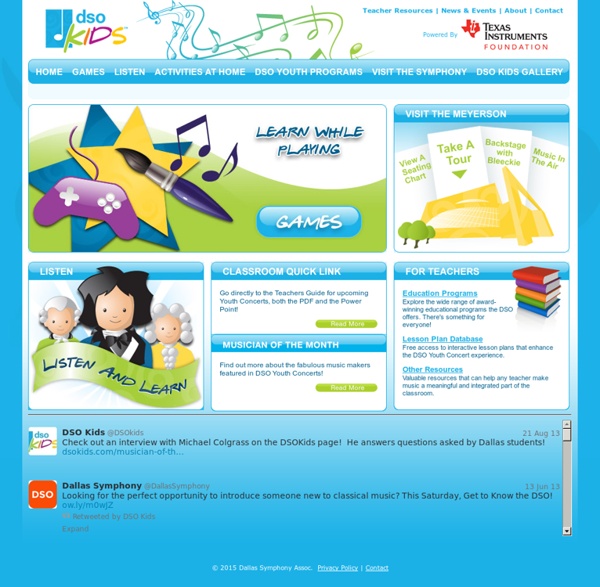



‘Melody’ Continue reading the main story Video For more than two decades, my home country of has had a stable democracy, as well as a thriving economy. At the same time, Chile has one of the largest wealth disparities in the world, reinforced by high tuition rates for secondary and college education. This means Chile has practically no social mobility, for how do you build a better future for yourself without education? This was a question I asked myself while making this short film, in which I explore music’s power to inspire children to escape poverty. Curanilahue is a small former coal-mining town that until recently was one of the poorest in Chile.
Music Education in Homeschool – Guest Post Today’s guest post is from Kate at Modern Alternative Mama showing us just how easy it is to include music in our homeschool. Don’t forget to stop by her blog and show her some love. Back before I had kids, I was a music teacher. Since they were born, though, I haven’t been so interested in teaching other peoples’ kids, and recently stopped entirely.
Kids Learn Music - {FREE} Lapbook 1StumbleUpon 3 I am so excited to share this amazing resource with you. I created a FREE Music lapbook and music worksheets to help teach toddler, preschool, kindergarten, and homeschool children about music. Tools for Teaching A preview of Smithsonian Folkways on iTunes U. Click the image to launch iTunes on your computer. Smithsonian Folkways is committed to offering educational materials to complement the music on our site.
Homemade Musical Instruments All children love music, and what better way to inspire them than by making their own homemade musical instruments! Kids get to be creative in two ways, by actually creating their own instrument and then by making their own music. Not only are these fun crafts to make, they also make use of recycled materials, like tin cans, toilet paper and paper towel rolls. Easy TambourineAges 3 and up This Easy Tambourine is a great homemade instrument for any child. You may need to tie on the bells, put they'll love to decorate it and then play some music! KazooAges 3 and up This is a very fun and easy musical instrument to make!
Carnegie Hall presents Honor! A Celebration of the African American Cultural Legacy - A History Press Partners Supporters Jessye Norman Glossary of Musical Instruments by Hobgoblin Music This list is based on information originally compiled by ARC music, and has been extensively revised, extended and developed for the internet by Pete McClelland at Hobgoblin Music. Please E-mail me if you know of instruments not listed, so I can add them. There is now a Basque language translation of this page by Jennifer Indurayne. A | B | C | D | E | F | G | H | I | J | K | L | M | N | O | P | Q | R | S | T | U | V | W | X | Y | Z | Back to Top Accordion: Free reed instrument with a keyboard originating in Saxony and Bohemia, now common throughout the world in folk music.
Homeschool Music Sitemap What are the elements involved in teaching homeschool music? Perhaps you don't think that your family is very musical and perhaps right now, none of your children are learning a musical instrument, but may I suggest to you that in teaching music, our children learn and develop these skills: Focused AttentionLong Term MemoryVisual and Auditory ProcessingLogic and Reasoning
Music — Early Am. « Easy Peasy — All in One Homeschool Music — Year 2 Levels: L — 1st through 4th M — 5th through 8th NOTE: My family has not used this page yet. Philharmonia Orchestra Here, the Philharmonia's expert players guide you through the intricacies of the instruments they play. Choose an instrument from one of the sections. The string section is the basis of the orchestra and the one consistent component of orchestras down the ages. The range of expression available and the great stamina of strings makes them a powerful tool. The Principal of the First Violin section is also the Leader of the orchestra.
Free Music Theory Worksheets! Material on this page is free.NEW! you can now consult an index of terms used in these worksheets.Also explore a page of worksheet extras: Worksheet Answers, Test Templates and Flash Presentations. Here are some testimonials from music teachers about these workbook chapters: